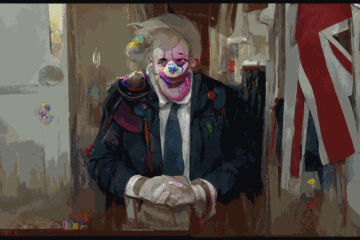As part of my job in educational technology, I like to tinker with technology to find solutions to problems. I also like to share these tinkering with friends and colleagues. The way I would previously do this involved regularly blogging the things I would make or do. I really did enjoy blogging, but since I finished my thesis, almost 3 years ago, I have written very few posts. In fact, just 4 have been posted, I am so concerned with how they will be received, two of these don’t even appear on this blog, but on an anonymous one instead. This lack of output is not for a lack of trying to write. On my computer I have many saved Microsoft Word files, forever unfinished and filled with half written tutorials and musings.

That isn’t to say I don’t share my practice of tinkering at all. In fact, as I have slowed down my blogging, I have started to ‘stream’ my activities instead. These streams are live video demonstrations of tinkerings I’m currently engaged in. In these demonstrations’ I share my screen and discuss what I am doing live, with the activity often changing course mid-stream, depending on the real-time feedback of viewers. These streams are more intermate than a blog post, and rather than the global audiance of a blog post, the streams audience is usually made up of staff, students, friends and people I know.
I’ve been sold on streaming as a way of sharing practice for a long time. While in my mind, it moves my focus away from ‘content creation’ and towards ‘discussion’, there are arguments to do both. A blog post acts as a reference, a blog post doesn’t contain 20 minutes of debugging and shouting at a screen (although, that is part of the fun of streaming sometimes!), a blog post feels less intimate and in theory, I guess, should be easier on my nerves to post to a global audience. A stream is a discussion that allows real time feedback on what I am doing with staff and students watching, it allows me to evolve what I am doing in real time, with guidance from viewers, but also requires me to really think about what I am doing ‘in the moment’, it can be a bit nerve wrecking.
In some ways, I’ve come to feel that a stream is the more ‘authentic’ of the two approaches in sharing practice. Or perhaps a better way of putting it, blogging started to feel ‘unauthentic’. SEO put so much focus on presentation, that meaning became lost somewhere in the noise. Before a blog post is made, I feel the need to go through a SEO check-list, or risk a telling off from WordPress. Do I have the right keywords and images set? Am I posting it to the right social media channels? I’m sure professional streamers also go through a similar process, the short-term nature of my streams means presentation it doesn’t bother me in the same way. All that I care about from the remains from my live stream is the discussion, and how it moves my practice forward. I find empowerment in devaluing the content and it’s presentation while focusing on the discussion. Reading about AI has made me revisit my understanding of what it means to be authentic.
A few days ago I had a good giggle at this BBC article, Could an AI-created profile picture help you get a job, which made me think about presentation, sharing and content. The article is about a growing trend among young adults are using AI to create professional-looking profile pictures for their CVs. The gist is this, they upload a few pictures and an AI service will spit out a picture of them in a suit; looking smart and eager to work. I loved this idea. Not because it gives young adults the chance to look professional easily, but because it devalues the whole idea of the professional photo. I hate CEO style linked-in headshots; they are part of a ‘noise’ of presentation that modern day work demands, and being able to create them quick and easily devalues it as an idea. I love the idea that, if there is no longer a way to know the authenticity of a professional looking picture in a job application, all professional looking job applications pictures become worthless and suddenly that method of presentation ourselves becomes worthless; perhaps the whole CV is AI generated, maybe recruiters will be forced to understand people. Maybe the infamous CEO style linked in page is a thing of the past.

AI amplifies spurious realities, as the reader you have no idea of much content in this blog post has been generated by AI, and in a weird kind of way, I feel empowered by that. The only signs that this voice you read is mine are the imperfections found thoughout it. If a fake antique is functional and beautiful, to the point of us being unable to tell the difference between the real and the fake, why do you need to know the difference? It forces people to look beyond the presentation of content for the conversation, past both the function and beauty for something more. I no longer feel as concerned about the spelling and punctuation mistakes, because if I wanted to hide them, I could have just fully automated this post through AI.
On the flip side, as I worry less about authenticity in the way I share practice, powerful institutions will become more concerned with the question of “what is real?”, I’m wondering if eventually, unable to keep up, they also might have to re-evaluate what authenticity is.

0 Comments